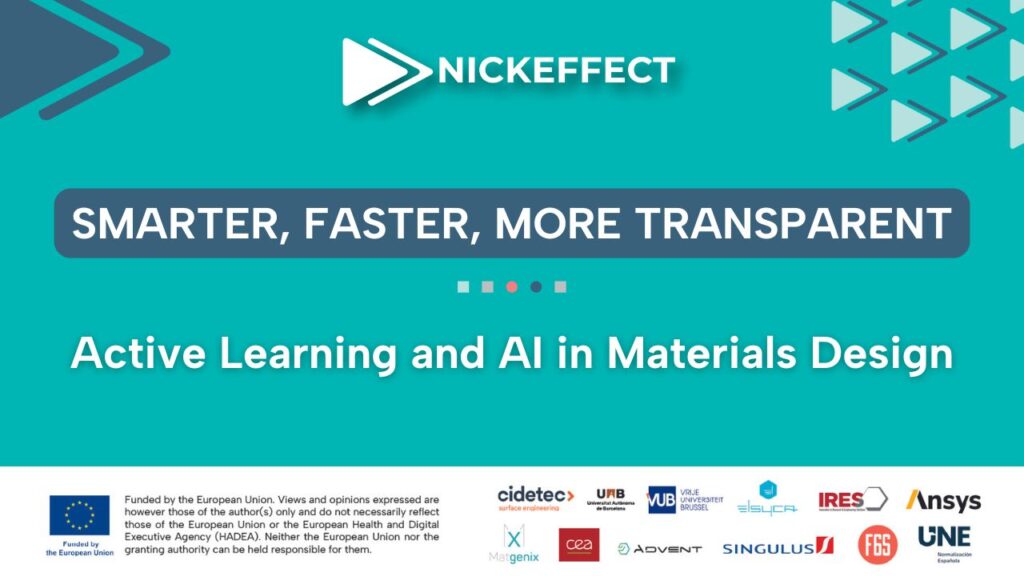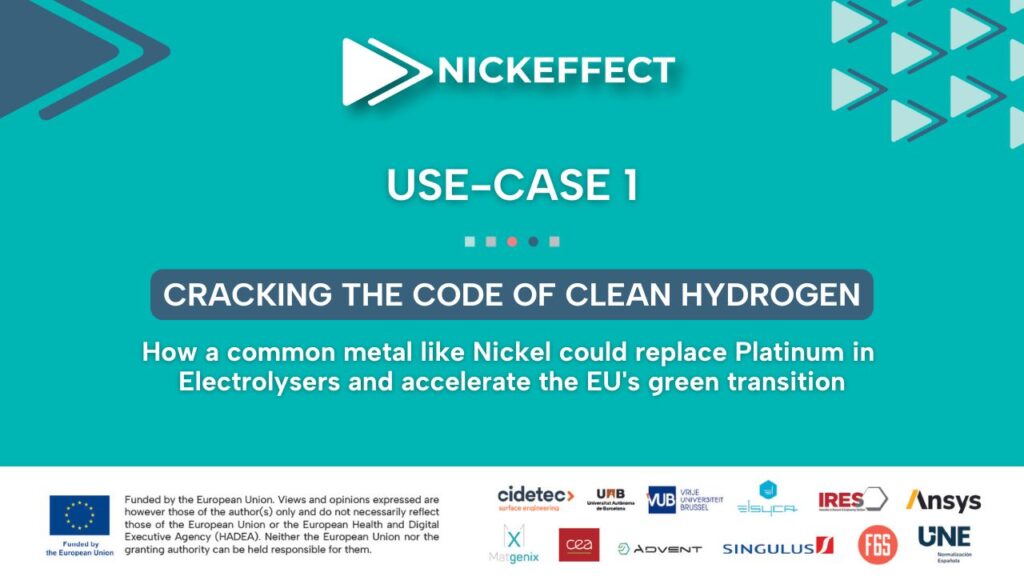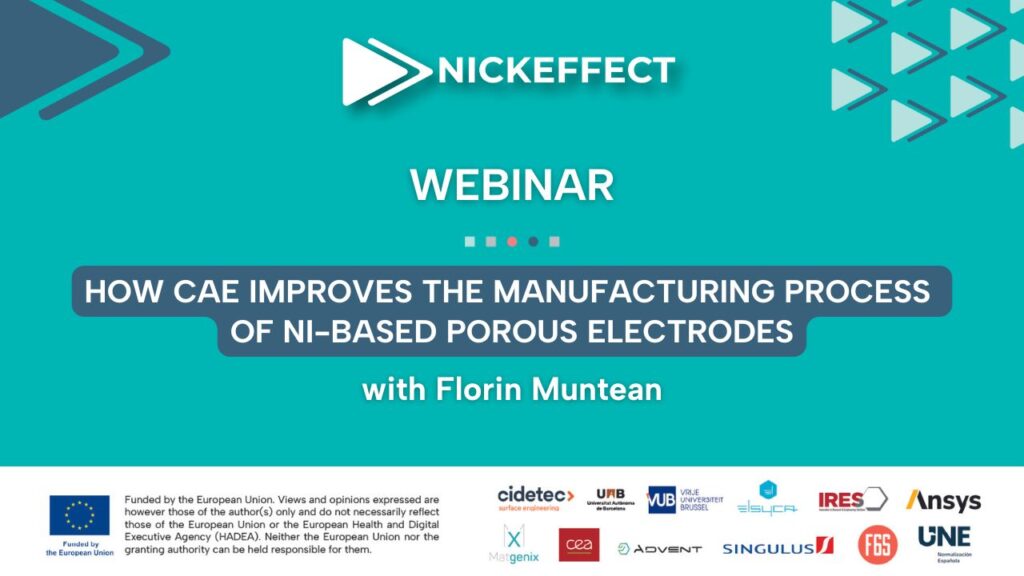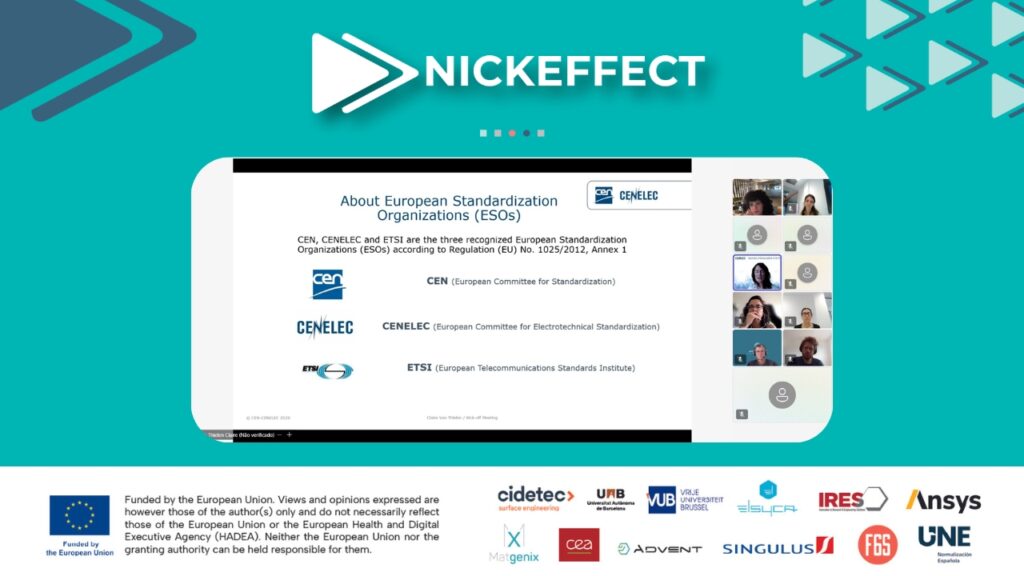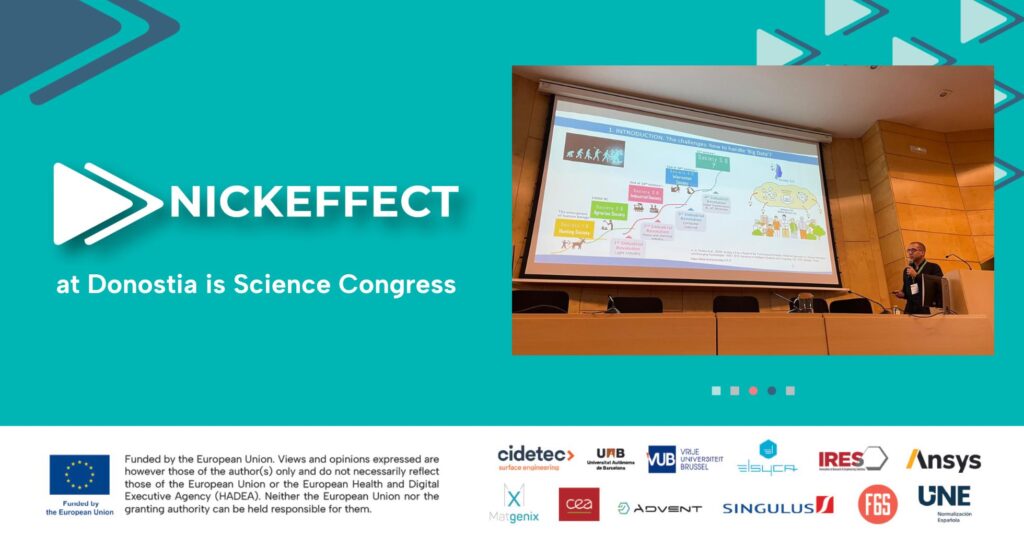News
Materials design remains a very complex challenge in science and engineering, owing to the virtually infinite number of variables such as material composition and synthesis parameters. Traditionally guided by expert […]
How a common metal like Nickel could replace Platinum in electrolysers and accelerate the EU’s green transition Imagine trying to replace the world’s best performer with a budget alternative—and […]
NICKEFFECT recently hosted a webinar, “Magneto-Ionics for Energy-Efficient Brain-Inspired Memory Devices,” on 16th July at 10:00 CET. This insightful session, presented by Jordi Sort, a NICKEFFECT project partner from the […]
Last month, the NICKEFFECT project hosted a webinar titled “How CAE Improves the Manufacturing Process of Ni-based Porous Electrodes”. Organized by project partner VUB, the session featured a presentation by […]
The NICKEFFECT project was a key partner in the CEN/CENELEC kick-off workshop held on June 18th, which focused on “Electrochemical characterisation at laboratory scale of non-noble porous metal-based electrodes for […]
Professor Jordi Sort, an ICREA Professor from the Autonomous University of Barcelona (UAB) and a key partner in the NICKEFFECT project, delivered a compelling Plenary Talk at the international conference […]

